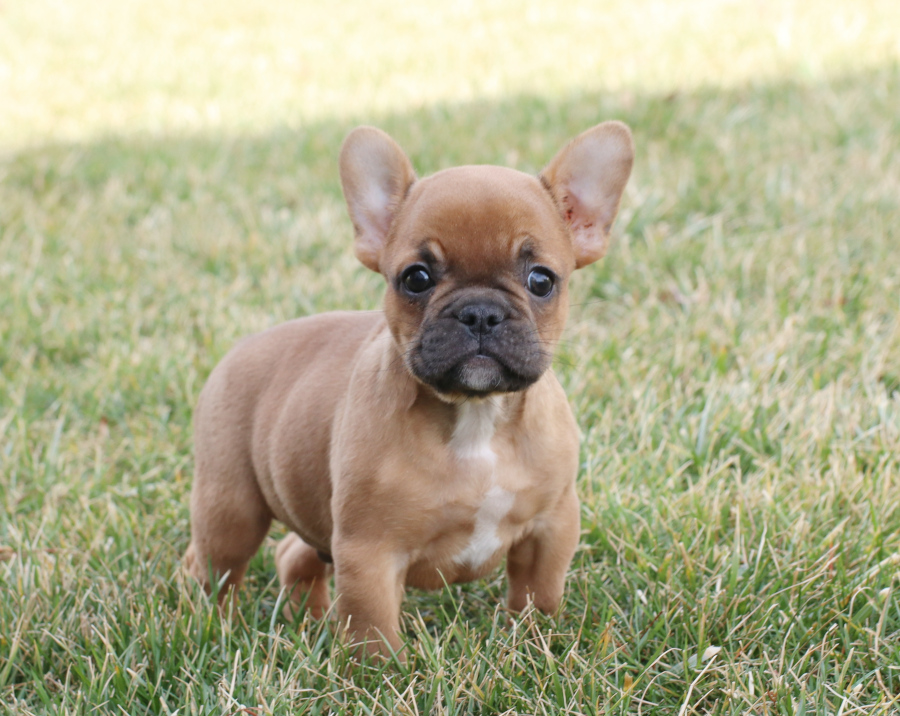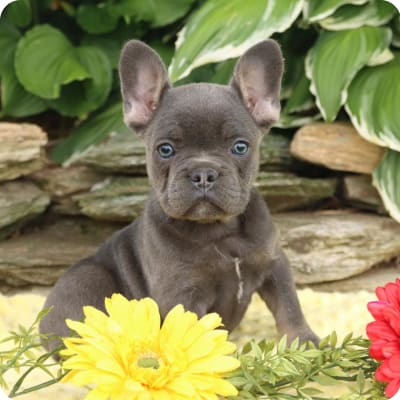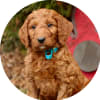French Bulldog Puppies

The Charming and Affectionate French Bulldog
This small breed of Bulldog was originally developed in the 1800s as a companion dog, a unique role for a dog during that time. They are charming and affectionate and make great pets for families of all sizes. They are very popular in cities and make great apartment dogs.
French Bulldog At a Glance




French Bulldog At a Glance
- Size: 10"-13", 24-30 lbs.
- Lifespan: 10-14 years
- Energy Level: low
- Coat: Short and coarse
- Shedding: moderate
- Hypoallergenic: No
- Dog Group: Non-Sporting
- Common Nicknames: Frenchie, The Clown Prince of Dogs
French Bulldog Breed Guide
Learn More About French Bulldogs


